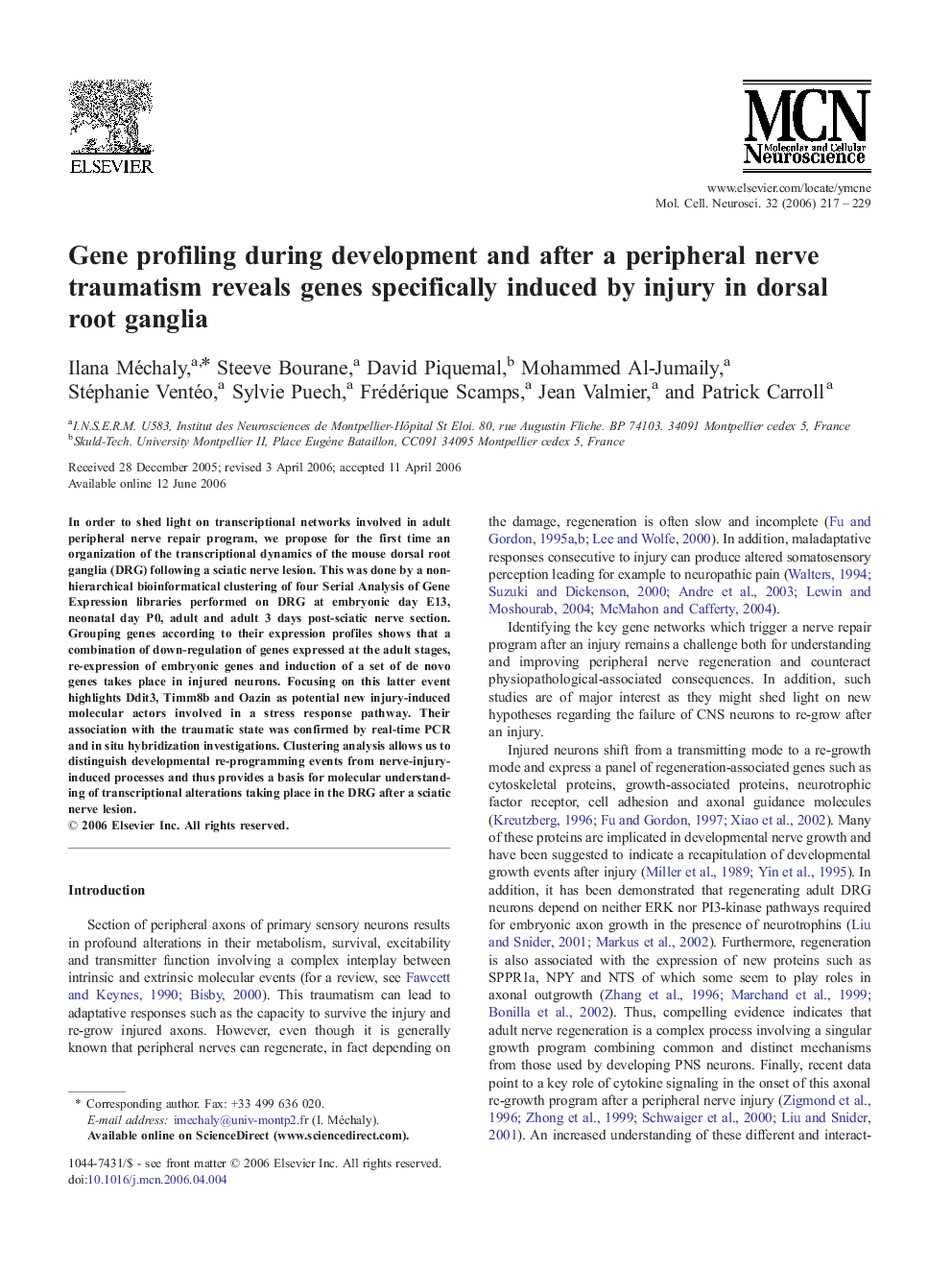| Article ID | Journal | Published Year | Pages | File Type |
|---|---|---|---|---|
| 2199270 | Molecular and Cellular Neuroscience | 2006 | 13 Pages |
In order to shed light on transcriptional networks involved in adult peripheral nerve repair program, we propose for the first time an organization of the transcriptional dynamics of the mouse dorsal root ganglia (DRG) following a sciatic nerve lesion. This was done by a non-hierarchical bioinformatical clustering of four Serial Analysis of Gene Expression libraries performed on DRG at embryonic day E13, neonatal day P0, adult and adult 3 days post-sciatic nerve section. Grouping genes according to their expression profiles shows that a combination of down-regulation of genes expressed at the adult stages, re-expression of embryonic genes and induction of a set of de novo genes takes place in injured neurons. Focusing on this latter event highlights Ddit3, Timm8b and Oazin as potential new injury-induced molecular actors involved in a stress response pathway. Their association with the traumatic state was confirmed by real-time PCR and in situ hybridization investigations. Clustering analysis allows us to distinguish developmental re-programming events from nerve-injury-induced processes and thus provides a basis for molecular understanding of transcriptional alterations taking place in the DRG after a sciatic nerve lesion.
